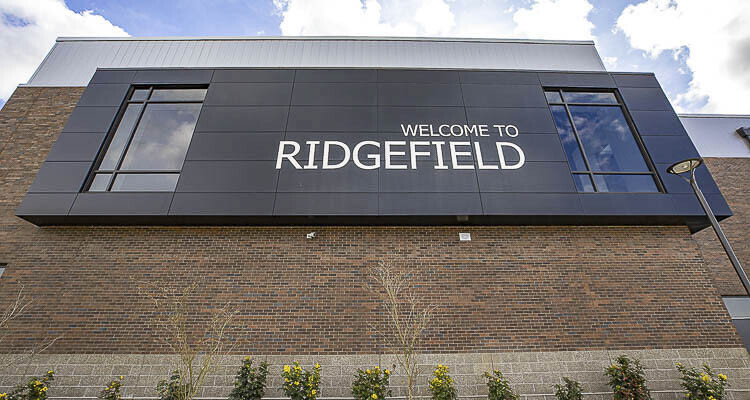
Ridgefield resident Heidi Pozzo provides her analysis to this important question
Heidi Pozzo
for Clark County Today
Did you get what you paid for in the 2017 Ridgefield School District Bond? The short answer is no. It did not do what it promised in terms of cost and capacity.

The whole point of building new schools and additions is to add capacity. So, hitting the increased capacity goal is the most important outcome. And it didn’t happen.
Will this happen again in the 2024 bond? It might. That’s why we all need to pay attention to both cost and capacity. Did you notice there are no capacity numbers on the District’s bond page? And only a topline cost number?
Yet the whole point of the bond is to increase capacity. And the bond language says funds can be spent on other things. Is that ok with you?
So what happened with the 2017 bond?
The district will share with you that they did deliver. The 5-8 school, View Ridge/Sunset Ridge, was built. There was an expansion at the high school. But they don’t mention that it doesn’t have the administrative offices that were promised. The old View Ridge school was turned into an administrative and civic center. Plus a sports complex. But the whole point was to increase capacity at a specified cost.
The cost was $9 million more than planned.
The bond proposal was for $98.5 million, of which $77.695 million was financed through a bond. However, the cost came in at roughly $107.6 million after assumed reimbursement of roughly $5 million from the city of Ridgefield for the RACC and RORC. Funds to pay for the extra spending came from additional state match funds. And we don’t know how the owner’s contingency was spent.
Where was the additional money spent? Early learning classrooms, student health and wellness center, tennis courts, etc. At the same time, the promised administrative offices at the high school were not built, and neither was an envisioned career center above the library in the new high school addition. Details are sparse on why.
Capacity fell short by at least 340 seats (with a caveat about changing numbers, see below):
Promise 1: Increase capacity in the K-8 schools by 1,200 students. Did it deliver? No.
The new 5-8 school has capacity of 1,157 students. However, because the district chose to accept state matching funds, it took the old View Ridge school out of service. That meant 297 seats were removed from permanent capacity.
Capacity only increased by 860 seats, not the promised 1,200. A shortfall of 340 seats.
Promise 2: Increase capacity in the high school by 300 students. Did it deliver? Probably
This one is a little trickier because class sizes increased, so a little math is required to separate the increased capacity from the increased class sizes between the Capital Facility Plans between 2015 and 2022 because the square footage didn’t change.
The average students per classroom increased between 2015 and 2022 from 21.2 to 24.3. Using the 2022 class size, the impact of increased class sizes was 91 students.
If the math is right, the demolition of the old building and the construction of the new building added about the 300 seats promised (much of the planning shows the increase was expected to be 500 at the high school).
Overall, the bond fell short of its promised increase in capacity. The devil is always in the details. That’s why it is so important to ask about how well these projects are delivering on increased capacity.
How can we do that going forward?
To her credit, new Board Member Amber Baker has suggested that the district establish a Bond Committee to oversee some of these issues. It’s important to remember that committees report to boards who make final decisions. And typically decide what to share publicly. So, what matters is who is on the committee, whether the District Board takes recommendations from the committee and how much information they share.
If the point is to increase capacity at a defined cost, we should see capacity targets and detailed budgets. Then reporting against the capacity target and how money was spent.
Here’s the caveat from above. There are several different promises for increased capacity.
• The 2015 Capital Facility Plan said the plan was to increase K-8 by 1,200 and the high school by 300
• The 2015 Capital Facility Advisory Committee said the plan was to increase 5-8 capacity by 1,200 and high school capacity by 500. This was the concept approved by the Board in May 2016 to develop more detailed plans that became the 2017 bond.
• A September 25, 2016 town hall announcement indicated the high school expansion would increase capacity by 500
• The November 11, 2016 press release announcing the Board approved the bond for the February 2017 ballot indicated capacity would be increased by at least 1,300
Heidi Pozzo has been a Ridgefield resident for 16 years. She is a concerned citizen who would like students to get a good education and thinks we can do it in a more cost-effective way.
Also read:
- Opinion: Fort Vancouver Regional Libraries levy lid liftDick Rylander shares Q&A with FVRL leadership about the proposed levy lid lift, detailing budget needs, tax impacts, and what a YES or NO vote could mean for library services.
- Letter: ‘The public has allowed this to happen’Wynn Grcich calls on Vancouver residents to support Justin Forsman and Rob Anderson in local elections and urges more civic engagement to challenge current city leadership.
- Letter: ‘I am a law-abiding citizen, who believes in the free speech of others’Jim McConnell of Vancouver shares his frustration over repeated sign thefts opposing changes to McGillivray Boulevard and defends the right to free speech in Cascade Park.
- Opinion: Taxes and assessed valuesDick Rylander explains how property tax proposals are calculated and urges Clark County residents to understand assessed values before voting on new taxes.
- Opinion: Why has Vancouver hired a shelter provider with a record of failure?Amy Harris questions Vancouver’s decision to hire Do Good Multnomah, citing documented failures and urging city officials to explain their choice.










